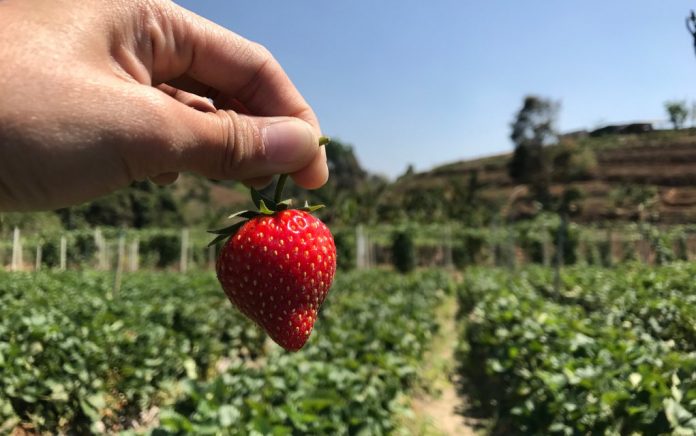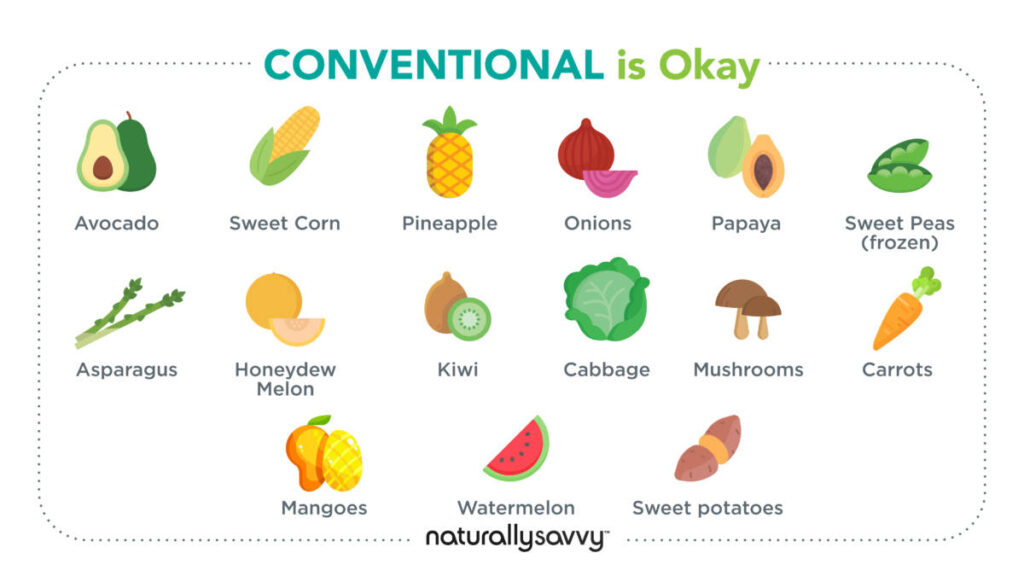
Do you use the Environmental Working Group’s 2023 Dirty Dozen and Clean 15 lists to help you do your produce shopping? Then grab your cloth bags and head out to the farmer’s market or the produce aisles!
Dirty or clean, fruits and vegetables are packed with nutrients and fiber and are a must on anyone’s daily menu. But it helps to know which of your produce purchases may be packing more pesticides than others, especially if you cannot find organic options.
The EWG’s analysis is based on data provided by the US Department of Agriculture and included samples of conventionally grown fruits and veggies for 2023. Before the produce was tested, it was washed and peeled. Overall, the analysis found many different pesticides on produce that were sold in the United States.
Read about 8 ways to save money on fruits and vegetables
If you are a regular follower of the EWG lists, you will see two ol’ timers topping the 2023 Dirty Dozen list: strawberries and spinach. However, this year blueberries and green beans are on the list. Blueberries were found to have fifty-four pesticides and green beans had eight-four. The most commonly detected pesticides have been classified as possible human carcinogens or even banned by the Environmental Protection Agency but somehow they are still out there being used on farms.
Overall, the EWG noted that nearly 70 percent of the fruits and vegetables sold in the United States have pesticide residues.
The 2023 Dirty Dozen list

Here are a few other things you should know about the Dirty Dozen for 2023:
- 75 percent of non-organic fruits and vegetables sold in the U.S. still have toxic pesticides on them.
- Some of the pesticides detected have been banned in the U.S. because of concerns about how they harm people.
- Nine out of 10 samples of each of the popular foods had residues of pesticides – with some showing traces of up to 17 different pesticides.
- Nearly 80 percent of blueberry samples had two or more pesticides.
- More than 70 percent of green beans had at least two pesticides, with a combined 84 different pesticides found on the entire crop.
Read about 13 foods to avoid that are not on the Dirty Dozen list
Clean 15 list for 2023
The fruits and veggies that are the least contaminated with pesticides are included in the Clean 15 list. Here are the winners:

Bottom line
The EWG’s 2023 Dirty Dozen and Clean 15 lists can help you make decisions about your fruit and vegetable purchases. However, generally, it is best to choose organic produce whenever possible. When it is unavailable or not feasible, thoroughly wash and/or peel conventionally grown fruits and vegetables to help ensure minimal exposure to pesticides.
Read This Next: Children’s Pesticide Exposure Highlighted in Terrible Twenty Campaign
Sources
Environmental Working Group. Dirty Dozen 2023
Environmental Working Group. Clean 15 2023
Environmental Working Group. Shoppers Guide to Pesticides in Produce.










